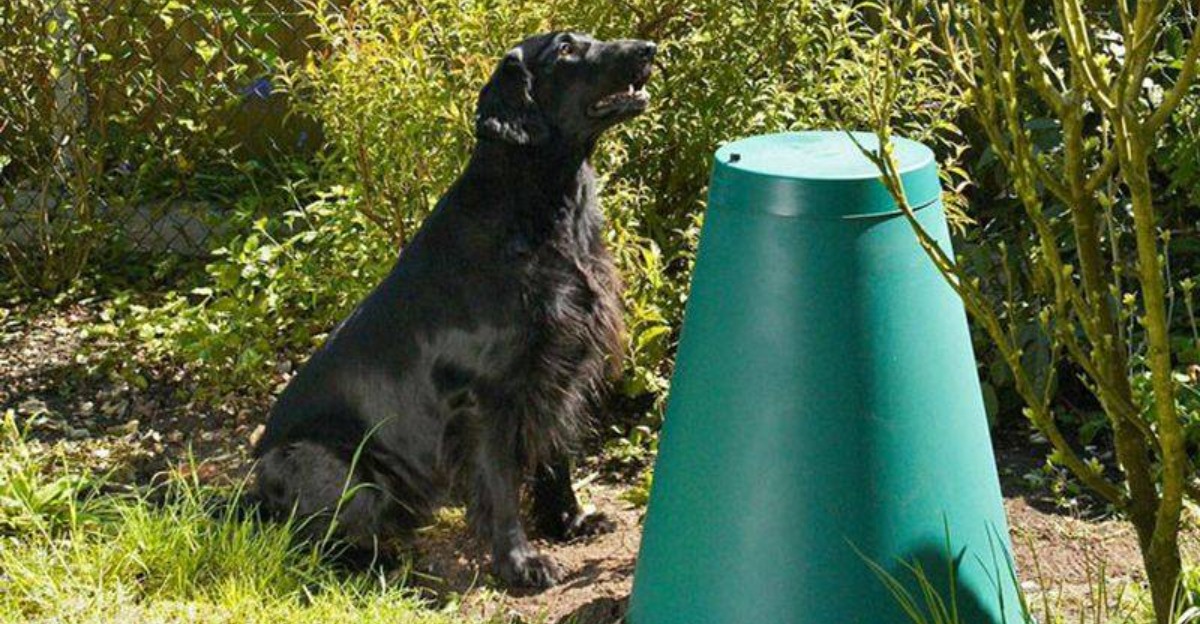
Seasonal Care Guide: Protecting Pets from Extreme Weather.
A comprehensive guide for pet owners on protecting their furry, feathered, and scaly companions from extreme weather, covering seasonal risks such as summer heat, winter cold, monsoon rains, and transitional allergies, with practical tips on hydration, grooming, shelter, diet, clothing, and emergency preparedness, ensuring pets stay safe, healthy, and comfortable year-round while fostering a stronger bond between owners and their animals.
🐶 Pet Star
61 min read · 18, Oct 2025

Introduction: Why Weather Protection Matters for Pets
Just as humans adapt to changing weather conditions, pets too need specific care throughout the seasons. Unlike us, they can’t tell when they’re too hot, too cold, or dehydrated — making them vulnerable to temperature extremes. Whether you live in a tropical region where summer heatwaves are rising, or in colder climates where winters are getting harsher, understanding how to safeguard your pets against extreme weather is vital for their health and happiness.
In 2025, climate patterns are more unpredictable than ever. With record-breaking heat, erratic cold snaps, heavy rains, and dry spells, pet owners must take proactive measures to keep their furry, feathered, or scaled companions safe year-round. This comprehensive guide explores how to protect pets from seasonal hazards — from scorching summers to freezing winters — and offers practical, science-backed advice for every pet owner.
1. Summer: Beating the Heat
Understanding the Dangers
Summer heat can be deadly for pets. Dogs and cats do not sweat like humans; instead, they regulate body temperature through panting and limited sweat glands in their paws. This makes them highly susceptible to heatstroke, dehydration, and burnt paw pads. Small animals like rabbits, birds, and reptiles also suffer heat-related stress when temperatures rise above their tolerance levels.
Summer Safety Tips
- Provide Constant Fresh Water:
- Dehydration is one of the most common summer threats. Always ensure that your pet has access to cool, clean water. For outdoor pets, use spill-proof or weighted bowls, and consider adding ice cubes to keep water cool.
- Avoid Hot Pavements:
- Asphalt and concrete absorb and retain heat. If it’s too hot for your hand, it’s too hot for their paws. Walk dogs early in the morning or late in the evening when temperatures drop.
- Never Leave Pets in a Parked Car:
- Even with windows cracked, temperatures can soar to dangerous levels within minutes. A parked car can become a furnace, leading to fatal heatstroke.
- Shade and Ventilation:
- Outdoor pets must have access to shaded areas. Use ventilated shelters and avoid metal cages, which can trap heat. For indoor pets, ensure good airflow with fans or air conditioning.
- Cooling Products:
- Invest in cooling mats, vests, or elevated pet beds that allow air circulation underneath. Some pet owners even use frozen water bottles wrapped in towels for small animals.
- Watch for Signs of Heatstroke:
- Symptoms include excessive panting, drooling, lethargy, vomiting, or collapse. Move your pet to a cool area immediately and seek veterinary help if these symptoms occur.
- Adjust Feeding Times:
- Feed your pets during cooler parts of the day to reduce body heat generation. Light meals are preferable to heavy, high-fat foods.
- Groom Wisely:
- Don’t shave your pet completely — fur also protects against sunburn. Instead, trim long coats and brush regularly to prevent matting and allow air to circulate through the fur.
2. Winter: Battling the Cold
Understanding the Risks
Freezing temperatures, snow, and icy winds pose serious risks to pets. Frostbite and hypothermia are common during winter months. Even breeds with thick coats are not immune to extreme cold, especially if they spend long hours outdoors.
Winter Safety Tips
- Limit Outdoor Exposure:
- Take shorter walks during freezing weather. Puppies, senior pets, and those with thin coats should stay indoors as much as possible.
- Warm Clothing:
- Sweaters, jackets, and booties are not just fashion statements — they protect your pet’s body and paws from frost and salt burns.
- Check Paws After Walks:
- Ice, snow, and de-icing chemicals can cause irritation or poisoning. Always wipe and inspect paws after walks.
- Provide a Warm Sleeping Space:
- Keep your pet’s bed away from drafts or cold floors. Use thick bedding and consider heated pet pads for extra warmth (with supervision).
- Avoid Antifreeze Poisoning:
- Antifreeze (ethylene glycol) is highly toxic to pets, even in small amounts. Wipe up any spills immediately and store the substance securely.
- Monitor Body Condition:
- Pets burn more calories to stay warm, so increase their food slightly in cold months. However, balance it to prevent weight gain in indoor pets.
- Outdoor Shelter Essentials:
- If your pet must stay outside, provide a dry, insulated shelter elevated from the ground. The entrance should face away from the wind and be covered with a waterproof flap.
- Know the Signs of Hypothermia:
- Watch for shivering, pale gums, lethargy, and shallow breathing. If suspected, wrap your pet in warm blankets and seek veterinary care immediately.
3. Monsoon and Wet Weather: Managing Moisture and Mud
Understanding the Hazards
Rainy seasons come with their own challenges — from fungal infections to parasites and waterborne diseases. Constant moisture creates a breeding ground for bacteria and mold that can affect your pet’s skin, paws, and respiratory system.
Monsoon Safety Tips
- Keep Pets Dry:
- After walks or playtime, towel-dry your pet thoroughly, especially between toes and under the belly. Prolonged dampness can lead to fungal infections.
- Use Rain Gear:
- Invest in waterproof jackets and boots to keep pets dry and comfortable.
- Maintain Hygiene:
- Regular grooming and bathing with anti-fungal shampoos can prevent skin issues. Ensure the ears are dry — dogs with floppy ears are prone to ear infections in humid weather.
- Watch for Parasites:
- Fleas, ticks, and mosquitoes thrive during rainy seasons. Use veterinarian-approved repellents and check your pet’s fur regularly.
- Keep Feeding Areas Clean:
- Wet environments attract mold and pests. Always serve fresh food and clean water in dry bowls.
- Safe Shelter:
- Avoid damp or flooded areas. Keep pets indoors during thunderstorms to prevent fear-related stress or accidents.
- Exercise Indoors:
- Rain may limit outdoor play, so engage pets with indoor games like fetch or training drills to prevent boredom.
4. Spring and Fall: Allergy and Transition Seasons
Understanding the Challenges
Spring and fall bring moderate temperatures, but they also introduce allergens such as pollen, dust, and molds. These can cause itchy skin, sneezing, or watery eyes in pets. Transition seasons also mean shifting temperatures, requiring adaptable care.
Seasonal Care Tips
- Allergy Awareness:
- If your pet shows signs of excessive scratching or licking, consult a vet. Regular brushing removes pollen and reduces allergic reactions.
- Keep Fleas and Ticks Away:
- Warmer temperatures invite parasites. Use preventive medications year-round, not just in summer.
- Balanced Diet and Grooming:
- Shed control is important during spring and fall. Brushing helps manage loose fur and keeps the skin healthy.
- Monitor Temperature Fluctuations:
- Days may be warm and nights cold. Adjust bedding and clothing accordingly to prevent colds or overheating.
- Outdoor Play Precautions:
- Blooming plants may contain toxins. Always supervise pets during outdoor exploration.
- Hydration Still Matters:
- Even mild weather can dehydrate active pets. Keep water bowls filled and clean.
5. Special Considerations for Different Types of Pets
Dogs:
Dogs are highly sensitive to both heat and cold. Large breeds with double coats (like Huskies) may handle cold better but struggle in summer, while short-haired breeds (like Beagles or Pugs) require winter protection. Regular grooming, exercise adjustments, and hydration are key.
Cats:
Cats love warmth and often curl up near heaters or windows. Ensure they don’t overheat or burn themselves. Indoor cats may develop respiratory issues in winter due to dry air — use humidifiers if necessary.
Birds:
Keep cages away from drafts, direct sunlight, and AC vents. During cold weather, cover the cage partially with a breathable cloth at night for warmth. In summer, mist birds lightly to help them cool down.
Small Mammals (Rabbits, Guinea Pigs, Hamsters):
These animals are extremely temperature-sensitive. Keep their cages in shaded, well-ventilated spots during summer, and insulated areas during winter. Avoid placing them near windows, heaters, or fans.
Reptiles and Fish:
Temperature regulation is crucial. Use thermostats, heat lamps, or aquarium heaters to maintain optimal living conditions. Sudden temperature changes can cause stress or illness.
6. Emergency Preparedness for Weather Extremes
With global weather patterns becoming more erratic, every pet owner should prepare for emergencies such as heatwaves, storms, floods, or blizzards.
Checklist for Pet Emergency Preparedness:
- ID tags and microchip registration
- A waterproof carrier or crate
- Extra food and bottled water
- Pet first aid kit
- Blankets and towels
- Medication and health records
- Familiar toys or comfort items
Being proactive ensures your pet stays safe and calm even in chaotic situations.
7. Veterinary Check-Ups and Seasonal Health Monitoring
Regular vet visits can detect early signs of heat stress, frostbite, or allergies. Discuss preventive care based on your region’s climate — such as vaccinations for mosquito-borne diseases or supplements to support immunity during weather changes.
In today’s world of unpredictable climate shifts and extreme weather events, protecting pets has become a year-round priority for responsible owners. Unlike humans, animals can’t express discomfort clearly or adjust their surroundings when temperatures soar or plummet; they rely entirely on our awareness and timely action. During summer, pets face the highest risk of dehydration, heatstroke, and burnt paws. Dogs and cats don’t sweat like humans; they regulate body temperature mainly by panting, which becomes ineffective in high humidity. Therefore, constant access to clean, cool water, shaded resting areas, and ventilation is essential. Avoid walking pets on hot pavements since asphalt can heat up enough to burn their paw pads, and never leave them in parked cars, as even a few minutes can lead to fatal heat buildup. Cooling mats, fans, frozen water bottles wrapped in towels, and early morning or late evening walks can keep pets comfortable. Trimming long coats (without shaving) allows better airflow, and monitoring for heatstroke symptoms—like drooling, vomiting, or lethargy—can be lifesaving. On the other hand, winter brings its own challenges, particularly frostbite and hypothermia. Small breeds, short-haired dogs, kittens, and senior animals are especially vulnerable to freezing conditions. Pet clothing such as sweaters, coats, and boots is not merely decorative; it’s protective gear that guards against frost and ice burns. Keep walks short, dry paws afterward, and feed slightly more to help maintain body heat. Warm, draft-free sleeping spaces with thick bedding are vital. Never use open flames or direct heaters near pets, and beware of antifreeze poisoning, which can be deadly even in small quantities. For outdoor animals, provide insulated shelters elevated from the ground, facing away from the wind, with dry straw or blankets for warmth. Rainy and monsoon seasons create an entirely different set of problems, such as fungal skin infections, ear problems, and parasite infestations. Constant moisture encourages bacteria, mold, and pests like fleas and ticks, so keeping your pet dry is critical. Always towel-dry thoroughly after walks, use anti-fungal shampoos, and ensure food and bedding remain clean and dry. Invest in raincoats and waterproof boots to minimize exposure to dirty water. Standing water often hides parasites or diseases like leptospirosis, so discourage pets from drinking from puddles. During storms, pets may become anxious due to thunder; providing a calm, secure indoor environment reduces stress. Spring and fall, though milder, bring fluctuating temperatures and increased allergens like pollen and dust, which can cause itching, sneezing, or watery eyes. Regular grooming and brushing remove pollen from fur and prevent excessive shedding. Wiping your pet’s paws and coat after outdoor play can minimize allergic reactions. Continue year-round parasite prevention treatments, as fleas and ticks often thrive in transitional weather. In spring, plants begin to bloom, but some may be toxic to animals—keep curious pets from chewing on flowers or leaves. Likewise, fall’s cooler nights might tempt pets to seek warmth near stoves or heating units, which could lead to burns if unsupervised. Every pet species has unique needs: dogs struggle most with temperature extremes and require tailored grooming and exercise schedules; cats, though adaptable, can overheat in summer or develop respiratory issues in winter from dry indoor air—using humidifiers helps balance moisture. Birds need cages positioned away from direct sunlight or cold drafts, and during winter nights, partially covering the cage with a breathable cloth retains warmth. Small mammals such as rabbits, hamsters, and guinea pigs are highly temperature-sensitive—keep them in shaded, well-ventilated areas during summer and insulated, cozy spaces during winter, away from windows, fans, or heaters. Reptiles and fish, being cold-blooded, rely entirely on environmental heat or cooling sources; proper use of thermostats, heat lamps, or aquarium heaters is vital to prevent stress or illness from sudden temperature changes. Given the increasing unpredictability of climate conditions, emergency preparedness has become a key aspect of pet care. Every owner should maintain a ready-to-grab emergency kit containing food, bottled water, ID tags, medical records, first aid supplies, blankets, and familiar toys to reduce anxiety during evacuations. Microchipping pets and keeping their information updated ensures they can be safely returned if separated during disasters. Beyond season-specific measures, regular veterinary check-ups remain the foundation of all preventive care. Vets can identify early signs of heat stress, frostbite, allergies, or dehydration and recommend vaccines, supplements, or parasite control suitable for each season and region. They can also provide guidance on adjusting diet and exercise as temperatures change. Hydration, cleanliness, and attentiveness are universal necessities no matter the season. For instance, pets burn extra calories in winter to stay warm, while they need lighter meals in summer to prevent overheating. Simple lifestyle adaptations—like feeding during cooler times of the day, keeping litter boxes or cages dry, and brushing regularly—can make a major difference in overall comfort. Moreover, as climate change accelerates, weather extremes are becoming more frequent, and pet owners must evolve their practices accordingly. Installing temperature monitors in homes, scheduling walks strategically, and keeping a steady stock of essential supplies all contribute to pet safety. For example, desert climates demand constant hydration awareness, while snowy regions require protective clothing and paw balms to prevent cracking. In monsoon regions, the focus shifts to cleanliness and parasite control. The key lies in observation—learning your pet’s behavioral cues when they’re uncomfortable, anxious, or unwell. When properly cared for, pets adjust remarkably well to environmental challenges, but prevention is always better than cure. Ensuring they’re comfortable during temperature spikes or drops isn’t just about convenience; it’s about safeguarding their health, lifespan, and emotional well-being. In conclusion, seasonal pet care is an evolving responsibility that combines vigilance, preparation, and compassion. Each season brings its own tests, but with informed practices—adequate hydration in heat, warmth in cold, hygiene in rain, and allergy management in spring—pet owners can provide the safest and most nurturing environment possible. Climate unpredictability may continue to rise, but by understanding the science of pet physiology and the art of responsive care, owners can help their companions not merely survive the changing seasons but truly thrive through them, protected, comfortable, and loved every single day.
In the modern era, with rapidly changing climate patterns and extreme weather events becoming more frequent and severe, it has become critically important for pet owners to prioritize the seasonal care of their pets, recognizing that unlike humans, animals are entirely dependent on us to protect them from environmental hazards, as they lack the ability to articulate discomfort or take appropriate measures themselves, and this reliance spans across all types of pets, including dogs, cats, birds, reptiles, and small mammals, each with their unique sensitivities and requirements, making it imperative to adopt a comprehensive, season-specific approach that addresses not only immediate dangers such as heatstroke in summer or frostbite in winter but also long-term health implications caused by prolonged exposure to adverse conditions, beginning with the sweltering summer months, during which pets are exposed to extreme heat, high humidity, and potentially hazardous surfaces like asphalt or sand, which can cause painful burns on paw pads and, in severe cases, lead to systemic overheating, as most pets, particularly dogs and cats, have limited sweat glands and rely primarily on panting to dissipate heat, a mechanism that is insufficient in high temperatures or humid environments, necessitating constant access to fresh, cool water, shaded resting areas, and temperature-regulated indoor spaces, along with additional preventive measures such as cooling mats, fans, frozen water bottles wrapped in towels, and modifications to walking schedules to avoid the hottest parts of the day, while also monitoring for signs of heat distress, including excessive panting, drooling, lethargy, vomiting, rapid heartbeat, or even collapse, which require immediate cooling interventions and veterinary attention, and at the same time, dietary considerations should be adjusted to lighter, easily digestible meals consumed during cooler periods of the day to minimize internal heat production, whereas grooming practices should be optimized to trim long coats and remove tangles without completely shaving fur, as coats also provide protection against harmful ultraviolet rays, which can cause sunburn and exacerbate heat stress, while simultaneously preventing overheating through proper airflow, and as summer transitions into the monsoon or rainy season, additional challenges arise, such as prolonged moisture exposure, which creates a breeding ground for fungal and bacterial infections affecting skin, paws, and ears, particularly in pets with floppy ears or thick fur, while the increased prevalence of parasites like ticks, fleas, and mosquitoes necessitates strict adherence to preventive measures, including veterinarian-approved topical treatments or collars, and meticulous post-walk hygiene routines such as towel drying, ear cleaning, and careful inspection of paws to remove mud, debris, and chemical residues from de-icing salts or pesticides, along with protective clothing like waterproof jackets and boots to minimize direct exposure to wet conditions, complemented by careful monitoring of indoor air quality and temperature to prevent respiratory problems and stress, especially during thunderstorms or flooding events, which can trigger anxiety in many animals, followed by the transitional seasons of spring and fall, which, despite milder temperatures, present their own health concerns, as the proliferation of pollen, dust, and mold spores can trigger allergic reactions manifested as itching, watery eyes, sneezing, and skin irritation, requiring regular grooming, wiping of paws and fur after outdoor activities, and potential veterinary consultation for antihistamines or other treatments, while also addressing parasite control and the safe management of blossoming or decaying vegetation, which can be toxic if ingested, and throughout these seasonal transitions, owners must remain vigilant about hydration, diet, and exercise modifications to match the fluctuating environmental conditions, ensuring indoor pets are neither overheated nor exposed to dry air, utilizing humidifiers or climate-controlled environments when necessary, and for outdoor pets, providing insulated shelters elevated from the ground, lined with dry straw or blankets, oriented away from prevailing winds, and protected from rain, snow, or direct sun, with food and water supplies kept clean, fresh, and safe from contamination, and in winter months, when temperatures drop to dangerous levels, pets are particularly susceptible to frostbite and hypothermia, especially small breeds, thin-coated animals, puppies, senior pets, or those with pre-existing health conditions, necessitating warm clothing, booties, shortened outdoor excursions, careful paw inspection, dry bedding, and avoidance of heat sources that can cause burns or carbon monoxide exposure, along with adjustments to caloric intake to account for increased energy expenditure for maintaining body warmth, while also remaining alert to environmental toxins such as antifreeze, which is highly toxic even in small amounts, and across all seasons, emergency preparedness becomes a critical aspect of responsible pet ownership, including maintaining an accessible pet emergency kit with food, water, first aid supplies, blankets, medications, ID tags, and health records, as well as familiar toys to reduce stress in evacuation scenarios, and ensuring microchip registration and contact information are up to date, as natural disasters or sudden weather extremes may require immediate relocation, all of which highlights the indispensable role of veterinary care in seasonal pet protection, as regular check-ups allow early detection of heat-related stress, frostbite, dehydration, allergies, or other environmental illnesses, provide guidance on preventive treatments such as vaccinations, parasite control, and nutritional adjustments, and support owners in creating a safe, comfortable, and consistent environment that mitigates the physical and emotional stress of extreme weather conditions, emphasizing that attentive observation of behavioral cues, such as excessive panting, shivering, restlessness, or withdrawal, is equally important in recognizing discomfort or illness before it escalates into an emergency, and ultimately, by integrating proper hydration, temperature regulation, grooming, shelter, diet, preventive veterinary care, and preparedness measures into a year-round strategy, pet owners ensure that their companions can navigate the challenges posed by summer heatwaves, monsoon rains, spring allergies, fall transitions, and harsh winter conditions, not merely surviving but thriving in a safe, nurturing, and comfortable environment, demonstrating that proactive, informed, and compassionate seasonal care is the cornerstone of responsible pet ownership, which safeguards health, longevity, and quality of life for pets while fostering a deeper bond of trust and well-being between pets and their owners.
Conclusion
Protecting pets from extreme weather is a year-round responsibility that requires awareness, preparation, and compassion. Every season presents unique challenges — from heatstroke in summer to frostbite in winter, from monsoon infections to spring allergies. The key to keeping pets safe lies in anticipating weather changes, adapting care routines, and understanding the specific needs of your animal companion.
As climate fluctuations intensify globally, pet owners must evolve their care strategies too. Simple acts — like providing clean water, dry shelter, and appropriate clothing — can make the difference between comfort and distress. Regular grooming, balanced diets, and prompt veterinary care are your best tools in ensuring your pet not only survives but thrives through every season.
Ultimately, responsible pet care means being attentive, adaptable, and empathetic. Whether the weather brings sunshine, snow, or storms, your pet relies on you to be their protector against nature’s extremes.
Q&A Section
Q1: Why can’t pets tolerate extreme heat or cold like humans?
Ans: Pets have limited mechanisms for temperature regulation. Dogs and cats can’t sweat effectively and rely mainly on panting, while their fur coats can trap heat or cold. Their bodies can quickly become overwhelmed in extreme conditions.
Q2: How can I tell if my pet is suffering from heatstroke?
Ans: Signs include excessive panting, drooling, rapid heartbeat, vomiting, and collapse. Move your pet to a cool area, offer water, and contact a veterinarian immediately.
Q3: Is it safe to walk my dog in winter snow?
Ans: Yes, but with precautions. Limit walk time, use booties to protect paws from frostbite and salt, and dry them afterward. Avoid icy surfaces to prevent injuries.
Q4: What’s the best way to keep pets cool during summer without air conditioning?
Ans: Use fans, cooling mats, frozen water bottles wrapped in towels, shaded resting areas, and frequent hydration. Never leave pets in confined or poorly ventilated spaces.
Q5: Can rain or damp weather make my pet sick?
Ans: Yes. Prolonged dampness can lead to fungal infections, skin irritation, and respiratory issues. Always dry your pet after exposure to rain and maintain good hygiene.
Similar Articles
Find more relatable content in similar Articles

Pets and Mental Health: The Science Behind Emotional H..
Discover the profound impact o.. Read More

Virtual Vet Visits: Are Online Consultations Reliable?..
As pet healthcare embraces dig.. Read More

Social Media for Pets: Turning Your Pet into a Digital..
From playful puppies to charis.. Read More

Composting Pet Waste: A Greener Way to Clean Up...
As pet ownership continues to .. Read More
Explore Other Categories
© 2024 Copyrights by rPets. All Rights Reserved.